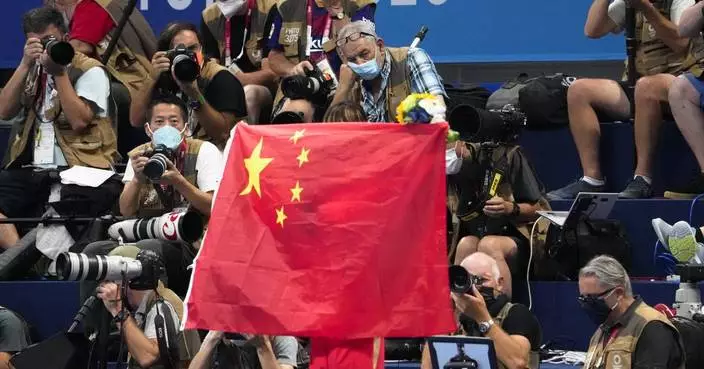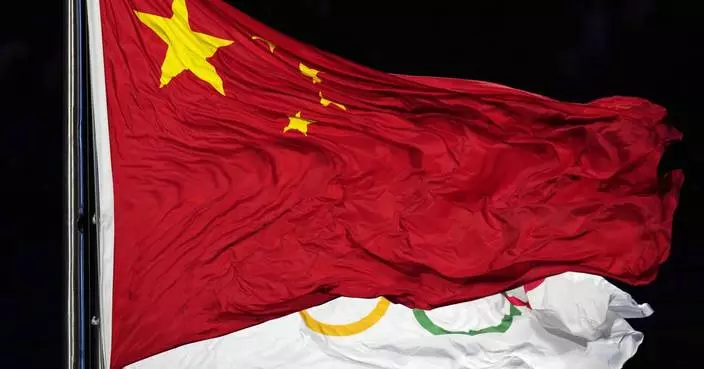For many people, the fashion world is a place where fame meets fortune. Tall, slim supermodels strut elegantly in clothes decorated in gold and silver; luxury goods are produced from this array of fancy attire and subsequently brought into the market, leading the trends of each season. Paris, the world’s fashion capital, has become the place to be for many aspiring designers.
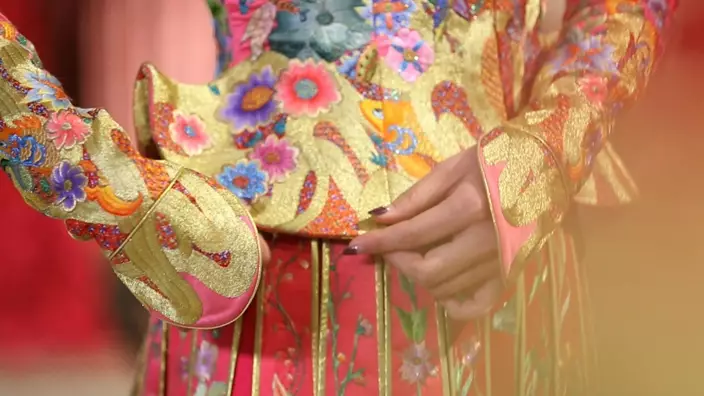
CGTN Photo
Click to Gallery
For many people, the fashion world is a place where fame meets fortune. Tall, slim supermodels strut elegantly in clothes decorated in gold and silver; luxury goods are produced from this array of fancy attire and subsequently brought into the market, leading the trends of each season. Paris, the world’s fashion capital, has become the place to be for many aspiring designers.
On the star-lit runways of Paris, a woman from Asia has caught the attention of many in this ever-changing industry.
Guo loves designing wedding gowns, believing that “a single wedding gown can be passed down for three generations.” Traditionally in China, a mother sews her daughter’s wedding gown. Each needle and thread carries the affection and prayers of a mother to her child.
Guo's studio is most famous for traditional embroidery. All her designs are handmade, stitch after stitch, by the studio’s embroiderers. Some pieces could take thousands of hours to complete. Authentic gold and silver threads and luxurious fabrics are used, and some of her designs weigh up to a few dozen pounds. Guo emphasizes the importance of the history and heritage of traditional clothes and craftsmanship, so she rarely uses modern technology in her fashion.
Guo's designs focus on the aspect of culture. She finds inspiration not only in traditional Chinese culture, but also the cultural exchanges that have been going on for the past few centuries, culminating in the flowers and birds shown in her designs. That’s why, aside from traditional dragon, phoenix, flower and bird patterns, she also incorporates flowers and fruits from western regions into her designs.
Guo's pursuit of beauty and her design aesthetic have garnered the attention of the fashion industry. One of her most recognizable designs was featured on the red carpet at the 2015 Met Gala. Singer Rihanna attended the annual event draped in a yellow dress and dramatic, fur-lined cape designed by Guo.
The two also collaborated back in 2010 during her “One Thousand and Two Nights” show. Upon seeing her design, Carmen said: “Pure beauty like this has left me in awe.”
Perhaps, for her customers and audience, the beauty of her designs is indeed a path to eternity.
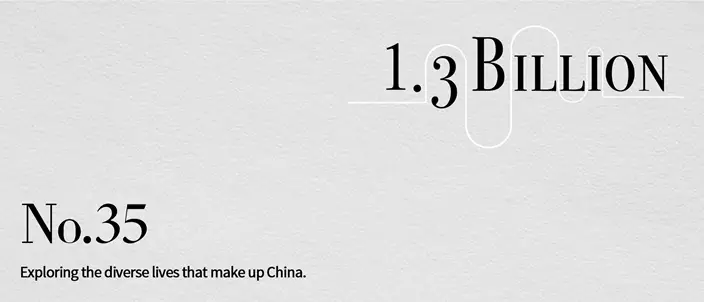
CGTN Photo
On the star-lit runways of Paris, a woman from Asia has caught the attention of many in this ever-changing industry.
“I don’t want to design up-to-date fashion," said Guo Pei, one of China’s first-generation fashion designers and haute couturiers. "I refrain from defining the lifespan of anything with time.”
Haute couture is an artistic, personalized method of design that Guo believes outlives the lifespan of “trendy clothes.” She hopes to merge clothes, people and culture into one, to create the sort of fashion that can truly become part of people’s lives.
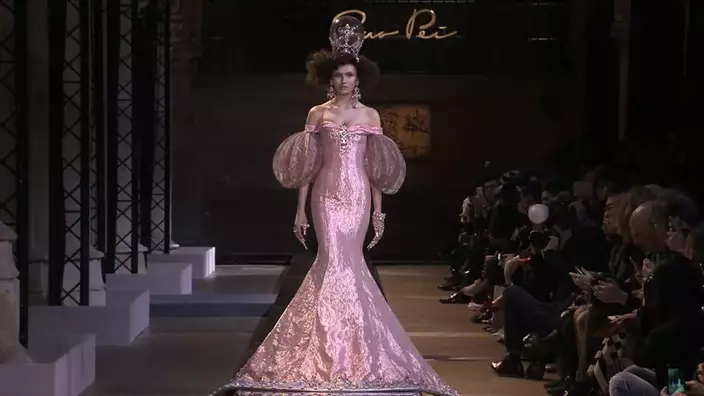
CGTN Photo
Guo loves designing wedding gowns, believing that “a single wedding gown can be passed down for three generations.” Traditionally in China, a mother sews her daughter’s wedding gown. Each needle and thread carries the affection and prayers of a mother to her child.
In modern China, only a few wear traditional wedding gowns on their big day. However, today, more celebrities are appearing in public wearing Chinese-style wedding gowns designed by Guo, slowly making her and her traditional handicraft the new mainstream.
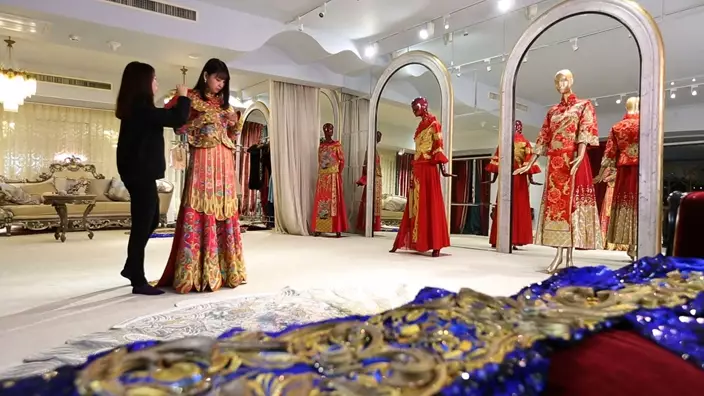
CGTN Photo
Guo's studio is most famous for traditional embroidery. All her designs are handmade, stitch after stitch, by the studio’s embroiderers. Some pieces could take thousands of hours to complete. Authentic gold and silver threads and luxurious fabrics are used, and some of her designs weigh up to a few dozen pounds. Guo emphasizes the importance of the history and heritage of traditional clothes and craftsmanship, so she rarely uses modern technology in her fashion.
Pure handicraft like this is deemed to be valuable enough to pass down to the next few generations.
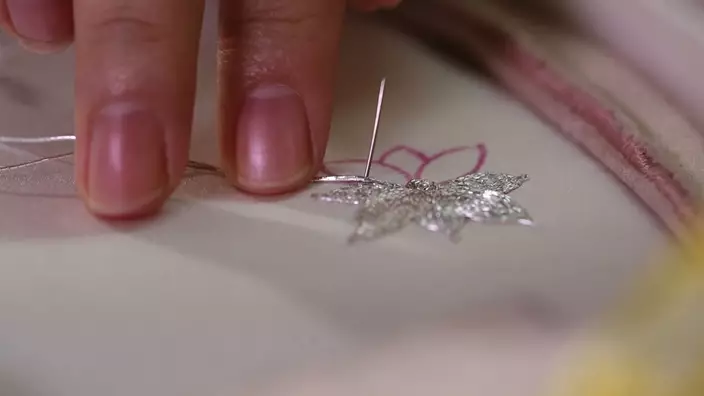
CGTN Photo
Guo's designs focus on the aspect of culture. She finds inspiration not only in traditional Chinese culture, but also the cultural exchanges that have been going on for the past few centuries, culminating in the flowers and birds shown in her designs. That’s why, aside from traditional dragon, phoenix, flower and bird patterns, she also incorporates flowers and fruits from western regions into her designs.
In the “Courtyard” series, Guo incorporated patterns showing the flowers and plants that grow inside Chinese courtyards into Western-style gowns, creating a graceful combination of the classic and the modern. This series was the grand finale at the 2016 Paris Haute Couture Fashion Week.
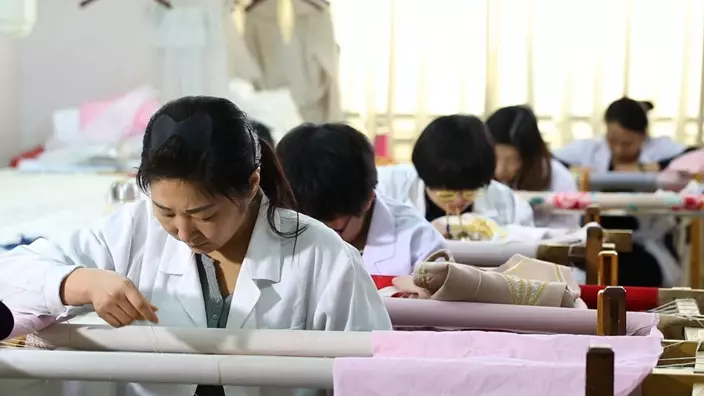
CGTN Photo
Guo's pursuit of beauty and her design aesthetic have garnered the attention of the fashion industry. One of her most recognizable designs was featured on the red carpet at the 2015 Met Gala. Singer Rihanna attended the annual event draped in a yellow dress and dramatic, fur-lined cape designed by Guo.
At her 2017 Paris fashion show “Legend,” 86-year-old supermodel Carmen Dell'Orefice, known as the world's oldest working supermodel, closed Guo's show in a blood-red gown.

CGTN Photo
The two also collaborated back in 2010 during her “One Thousand and Two Nights” show. Upon seeing her design, Carmen said: “Pure beauty like this has left me in awe.”
“Through handicraft, I want to convey a state of mind, a true aspiration,” said Guo, who sometimes embroiders her own designs. She believes that haute couture can help people rise above themselves to create better things, leaving memories for future generations.
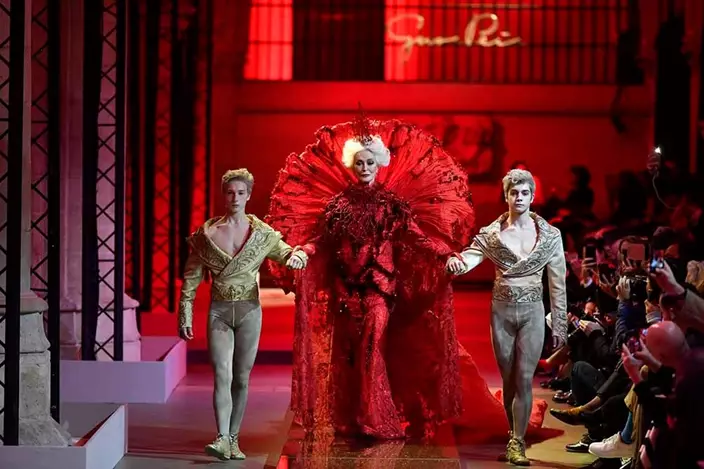
CGTN Photo
Perhaps, for her customers and audience, the beauty of her designs is indeed a path to eternity.

(Sina Fashion Photo)
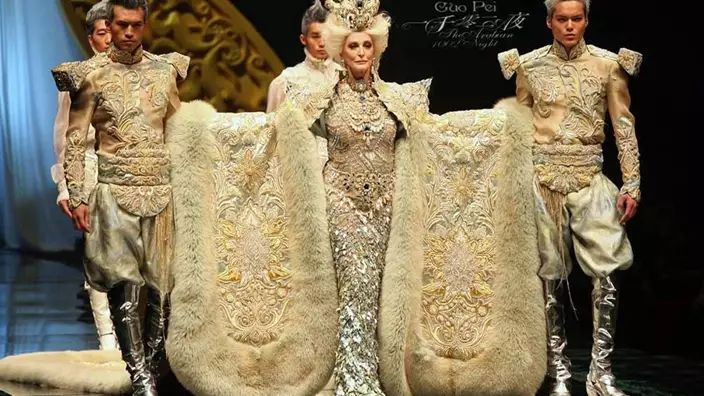
CGTN Photo

CGTN Photo
NEW DELHI (AP) — The hugely popular Chinese app TikTok may be forced out of the U.S., where a measure to outlaw the video-sharing app has won congressional approval and is on its way to President Biden for his signature.
In India, the app was banned nearly four years ago. Here's what happened:
In June 2020, TikTok users in India bid goodbye to the app, which is operated by Chinese internet firm ByteDance. New Delhi had suddenly banned the popular app, alongside dozens other Chinese apps, following a military clash along the India-China border. Twenty Indian and four Chinese soldiers were killed, and ties between the two Asian giants plunged to a new low.
The government cited privacy concerns and said that Chinese apps pose a threat to India’s sovereignty and security.
The move mostly drew widespread support in India, where protesters had been calling for a boycott of Chinese goods since the deadly confrontation in the remote Karakoram mountain border region.
“There was a clamour leading up to this, and the popular narrative was how can we allow Chinese companies to do business in India when we’re in the middle of a military standoff,” said Nikhil Pahwa, a digital policy expert and founder of tech website MediaNama.
Just months before the ban, India had also restricted investment from Chinese companies, Pahwa added. “TikTok wasn’t a one-off case. Today, India has banned over 500 Chinese apps to date.”
At the time, India had about 200 million TikTok users, the most outside of China. And the company also employed thousands of Indians.
TikTok users and content creators, however, needed a place to go — and the ban provided a multi-billion dollar opportunity to snatch up a big market. Within months, Google rolled out YouTube Shorts and Instagram pushed out its Reels feature. Both mimicked the short-form video creation that TikTok had excelled at.
“And they ended up capturing most of the market that TikTok had vacated,” said Pahwa.
In India, TikTok content was hyperlocal, which made it quite unique. It opened a window into the lives of small-town India, with videos coming from tier 2 and 3 cities that showed people doing tricks while laying down bricks, for example.
But for the most part, content creators and users in the four years since the ban have moved on to other platforms.
Winnie Sangma misses posting videos on TikTok and earning a bit of money. But after the ban, he migrated to Instagram and now has 15,000 followers. The process, for the most part, has been relatively painless.
“I have built up followers on Instagram too, and I am making money from it, but the experience isn’t like how it used to be on TikTok,” he said.
Rajib Dutta, a frequent scroller on TikTok, also switched to Instagram after the ban. “It wasn’t really a big deal,” he said.
The legislation to outlaw the app has won congressional approval and now awaits a signature from Biden.
The measure gives ByteDance, the app’s parent company, nine months to sell it, and three more if a sale is underway. If this doesn’t happen, TikTok will be banned. It would take at least a year before a ban goes into effect, but with likely court challenges, it could stretch longer.
In India, the ban in 2020 was swift. TikTok and other companies were given time to respond to questions on privacy and security, and by January 2021, it became a permanent ban.
But the situation in the U.S. is different, said Pahwa. “In India, TikTok decided not to go to court, but the U.S. is a bigger revenue market for them. Also, the First Amendment in America is fairly strong, so it’s not going to be as easy for the U.S. to do this as it was for India,” he said, in reference to free speech rights in the U.S. Constitution.
As Chinese apps proliferate across the world, Pahwa says countries need to assess their dependency on China and develop a way to reduce it as the apps can pose a national security risk.
The app is also banned in Pakistan, Nepal and Afghanistan and restricted in many countries in Europe.
“Chinese intelligence law and its cybersecurity law can allow Chinese apps to work in the interest of their own security. That creates a situation of distrust and it becomes a national security risk for others,” said Pahwa.
“There should be different rules for democratic countries and for authoritarian regimes where companies can act as an extension of the state,” he added.
—-
This story corrects the expert's erroneous reference to Fourth instead of First Amendment.
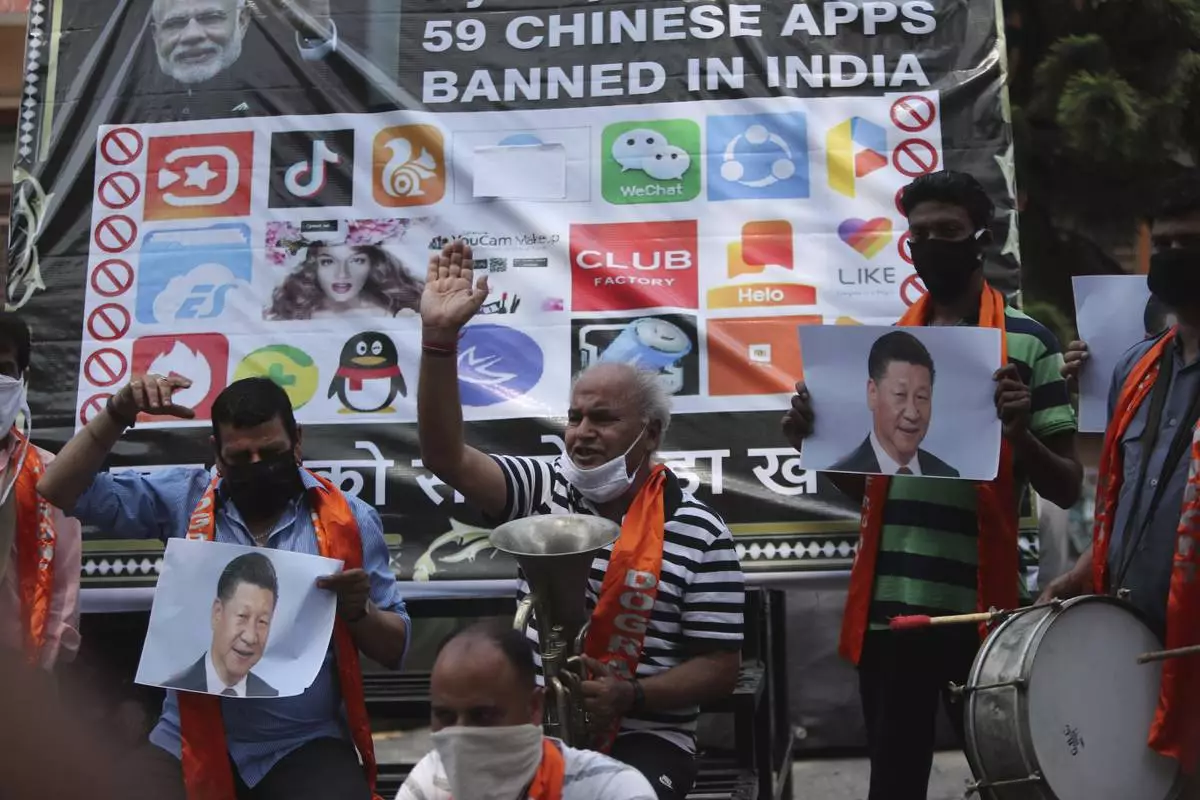
FILE- Activists of Jammu and Kashmir Dogra Front shout slogans against Chinese President Xi Jinping next to a banner showing the logos of TikTok and other Chinese apps banned in India during a protest in Jammu, India, July 1, 2020. (AP Photo/Channi Anand, File)


















